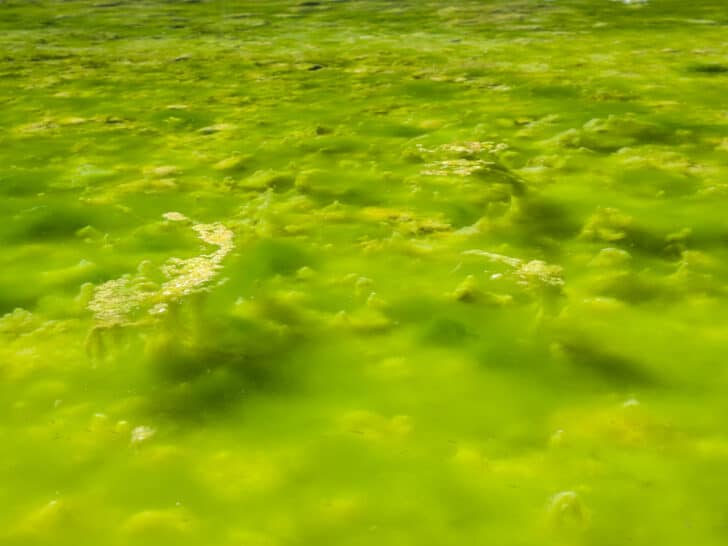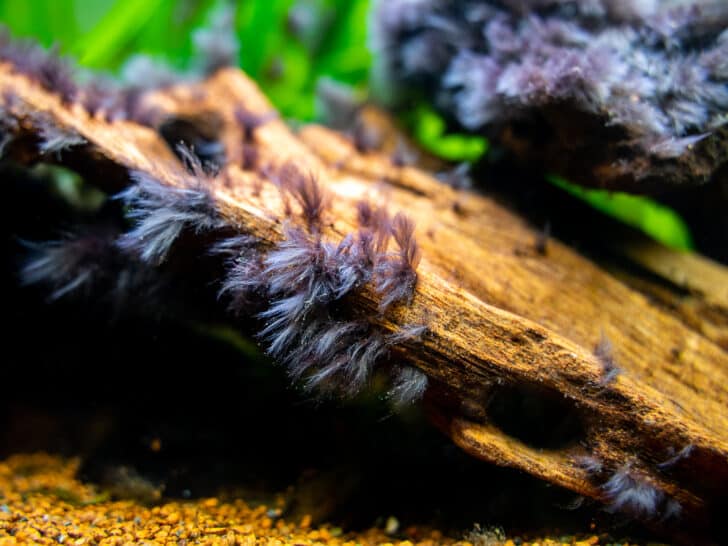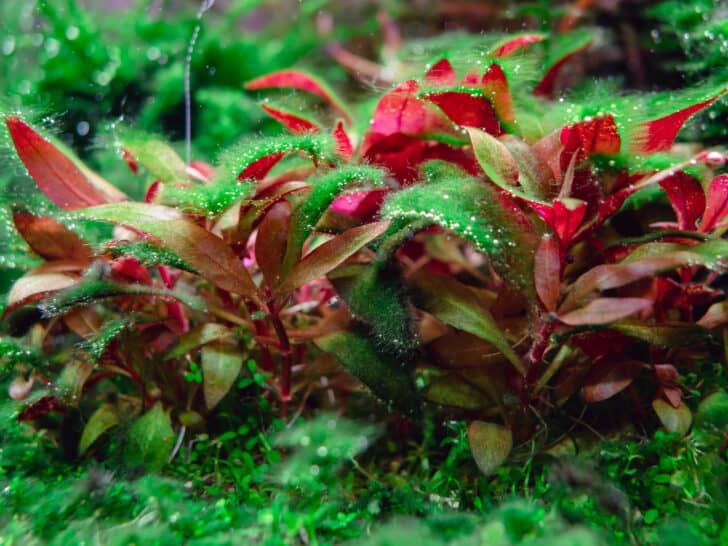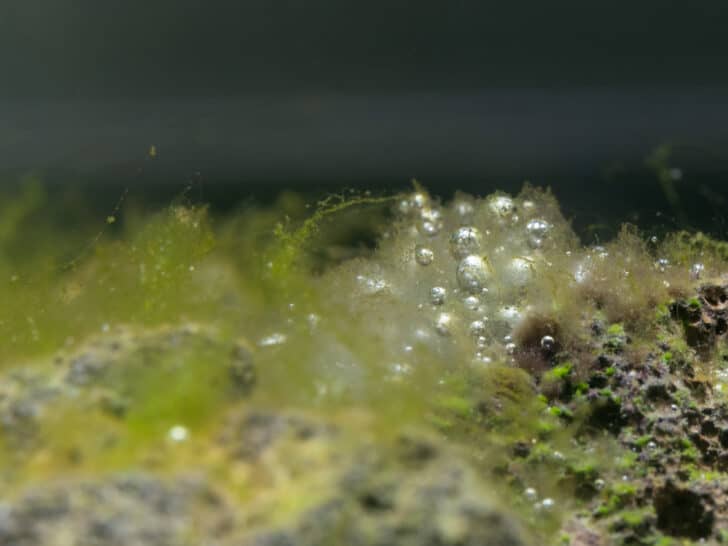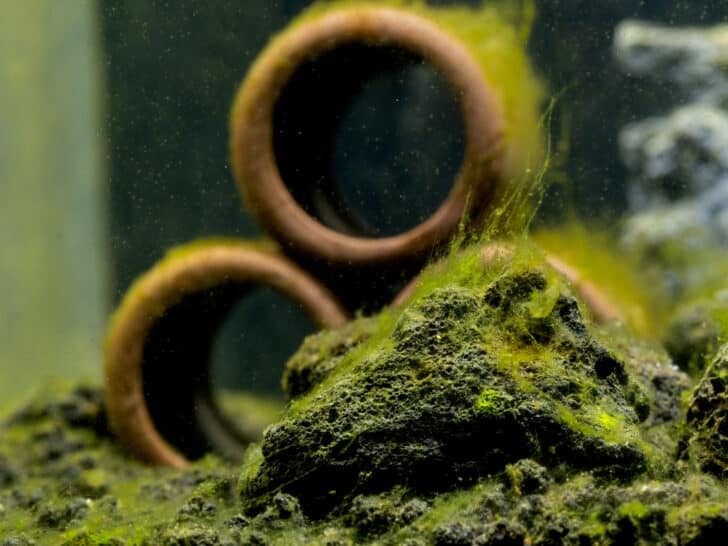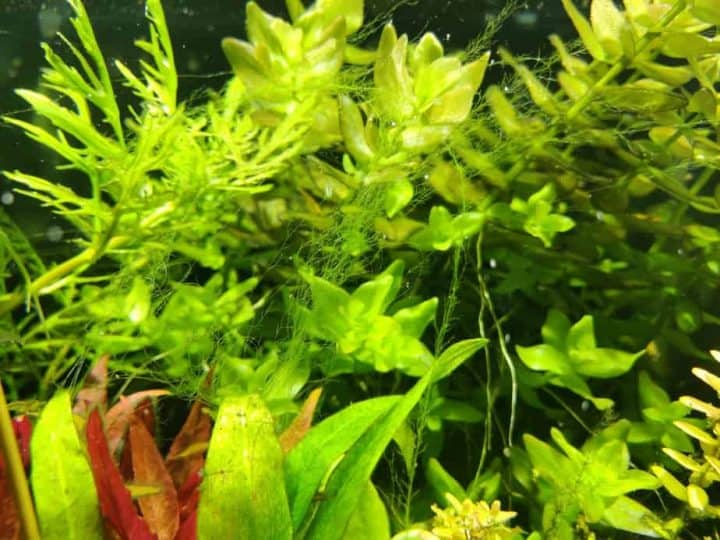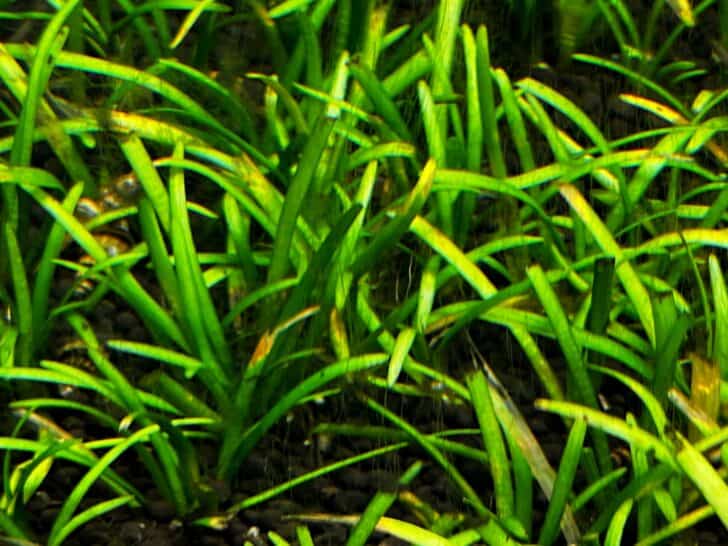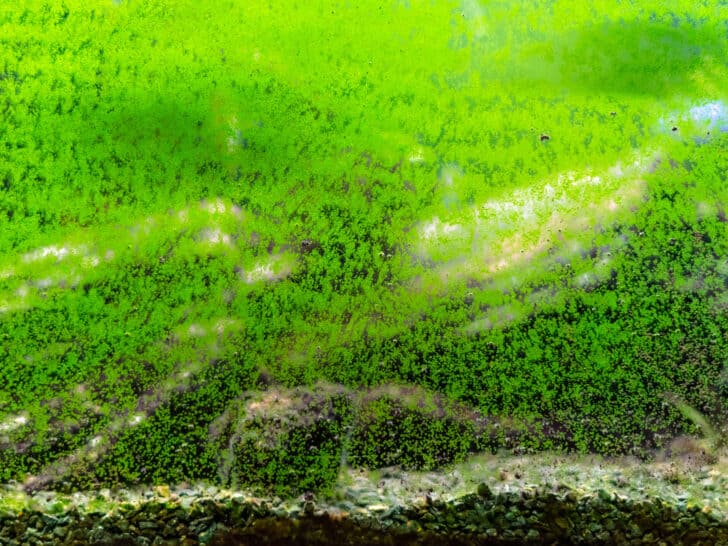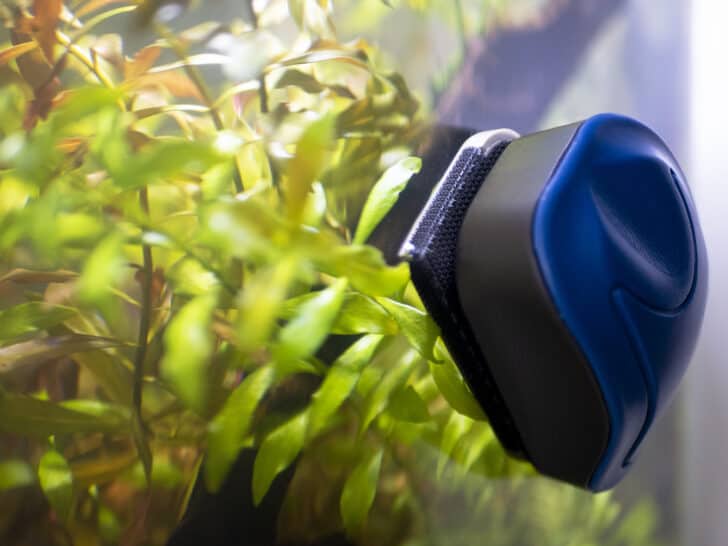Blue algae is one of the worst types of algae that can grow in an aquarium, both for your plants and fish. Here’s how to remove and prevent it:
Quick Answer
To remove blue algae from a fish tank, remove it manually, use an algae removal substance, increase oxygenation and circulation, blackout light from the tank, clear away organic debris and food sources, improve the health of your current plants, and in some cases, antibiotics might be required.
Keep reading to find out what blue algae is, where it comes from, and how to get rid of it once and for all.
What Is Blue Algae?
Blue algae is also known as blue-green algae. Interestingly enough, this is one of the few so-called types of algae in an aquarium that is not actually algae, but rather a bacteria, specifically cyanobacteria.
These are very resilient and hardy types of bacteria that just like plants and other forms of algae, use photosynthesis to survive. When they appear in freshwater aquariums, this type of algae often has a blue-green color, but may also be red, black, or brown.
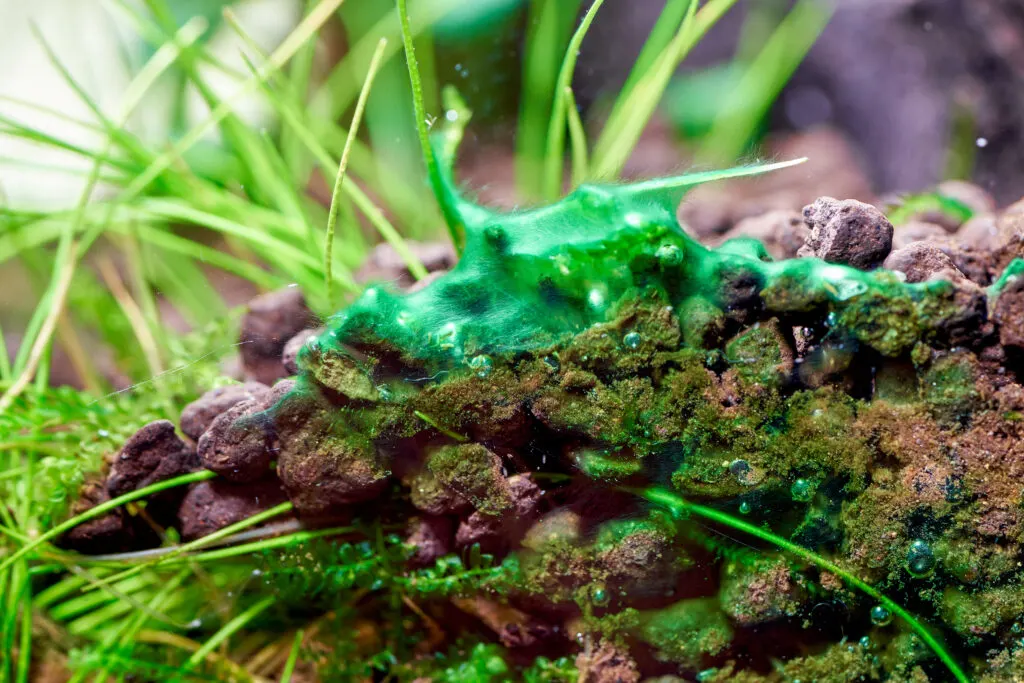
To recognize it, you might see a small spot of green or blue algae that quickly grows into a thick blue slime that stretches over your plants, decorations, and gravel.
Cyanobacteria can be harmful to fish if eaten, and may prove to be toxic. This type of algae can also completely smother your plants, as it will block your plants from receiving the sunlight they require to perform photosynthesis.
One of the biggest identifying features here is the smell. Blue-green algae has an absolutely terrible smell that will fill up the whole room, characterized by a foul, musty, earthy, swampy, and rotten odor.
What is interesting is that if you are able to recognize the smell of cyanobacteria in your aquarium, you might be able to tell that it’s present in your aquarium about two weeks before you can see it visually.
What Causes Blue Algae?
There are a few leading causes of blue algae growths in aquariums, and generally speaking, multiple factors come together to allow blooms to occur. Let’s take a quick look at the various causes of blue algae blooms.
Organic Waste Buildups
Blue algae love to feed on nitrogen, phosphates, and other such substances. Organic waste such as decaying plant matter, uneaten fish food, and fish waste, all release these substances into the water, therefore providing algae with the food it needs to grow.
A Lack of Biological Filtration
If your aquarium filter is not working properly, particularly the mechanical and biological filtration aspects, this may also lead to blue algae growth.
Your aquarium filter is designed to remove physical debris from the water, and to break down substances such as ammonia and nitrites. Without a well functioning filter, these substances stay present in the water, and provide algae with food sources.
Excess Lighting
One of the leading known causes for the growth of blue algae is excessive light levels. This type of algae absolutely loves sunlight, and thrives in it.
Poor Water Flow
If your aquarium has poor water flow, particularly if there are dead or stagnant parts of the aquarium where there is no water flow at all, this provides the cyanobacteria with a perfect breeding ground.
It lets them remain relatively undisturbed, and a lack of water flow also allows various nutrients to build up certain areas of the water.
Unhealthy Aquarium Plants
Yet another cause of blue algae growth in fish tanks is if you have unhealthy plants that are not growing properly. Plants that aren’t growing properly aren’t absorbing nitrogen and phosphates from the water, therefore leaving them for the algae to feed on.
A Poorly Maintained Aquarium
In general, a poorly maintained aquarium is responsible for the growth of algae. If you don’t regularly clean your fish tank and change the water, chances are that algae will start to grow.
How to Remove Blue Algae
There are a few proven methods that can help to remove blue algae from fish tanks, so let’s take a quick look at what these might be.
Manual Removal
If there is not much blue algae present in the fish tank, small spots can be removed manually using sponges, paper towels, or even your aquarium gravel vacuum.0
That said, although this will remove a lot of the visible blue algae, it won’t remove the smaller parts that you can’t see with your naked eye.
Perform a Water Change
Although you can’t change all of the water in your aquarium at once, you can change 30% at a time, and in emergency situations, you may be able to change up to 50% of the aquarium water at once.
This should automatically remove a lot of the cyanobacteria from the water, especially the smaller build ups that you can’t see yet with your naked eye. This, in combination with manual removal, should go a long way in controlling the situation.
Clean the Aquarium Plants and Decorations
If the buildup is very severe, you should remove all of your decorations and plants from the water and give them a bleach bath. Bleach is more than enough to kill this type of bacteria or algae, but beware that it’s also strong enough to kill fish and your other plants.
Therefore, when you make a diluted bleach solution to soak your plants and other decorations in, make sure to rinse everything off thoroughly afterwards. You do not want to introduce any bleach into your aquarium.
Increase Nitrogen Levels (For Plants)
This point may seem a bit confusing, because blue algae feeds on nitrogen, so it would seem counterintuitive to add more nitrogen into the tank.
However, if you notice that your aquarium plants are not growing properly, it could be because they aren’t getting enough nitrogen.
If your aquarium plants aren’t growing properly, then they also won’t absorb other nutrients from the water, the same nutrients that the algae use to feed on. Ensuring that your plants are healthy is a great solution for this problem.
Increase Water Flow and Oxygenation
Algae love stagnant water with low oxygen levels, so a good solution is to try increasing the water flow with a power head, such as this one, and increasing oxygenation using an air stone.
A Light Blackout
If the outbreak is fairly serious, you may be able to kill most of these cyanobacteria or algae by performing a light blackout for up to five days.
Completely blocking out your aquarium so that absolutely no light gets to it for a number of days should help to kill the majority of the bacteria. However, this is of course also not very good for your actual aquarium plants or other inhabitants.
Chemical Solutions
If everything else fails, you may need to use chemical solutions to get the algae bloom under control. There are plenty of great algae killing substances that are safe for aquariums, so we recommend doing some research on this front.
However, if you have a very serious outbreak of blue-green algae in your aquarium, you will likely require antibiotics, specifically erythromycin. The caveat is that this antibiotic treatment will negatively impact the nitrifying bacteria in your aquarium, so that is something to consider.
How to Prevent Blue Algae
Let’s take a quick look at some of the best tips for you to follow to prevent blue algae from growing in your aquarium in the first place.
- Don’t give your fish too much food.
- Don’t overcrowd the fish tank with too many inhabitants.
- Make sure that there are plenty of healthy plants.
- Make sure that your aquarium filter is working properly.
- Always sterilize and decontaminate any new objects being placed into the fish tank.
- Do not allow excessive nutrients to build up in the tank.
- Make sure that there is proper water circulation and oxygenation in the tank.
Conclusion
There you have it, you should now have all the information you need about blue algae to deal with it in an effective manner.

